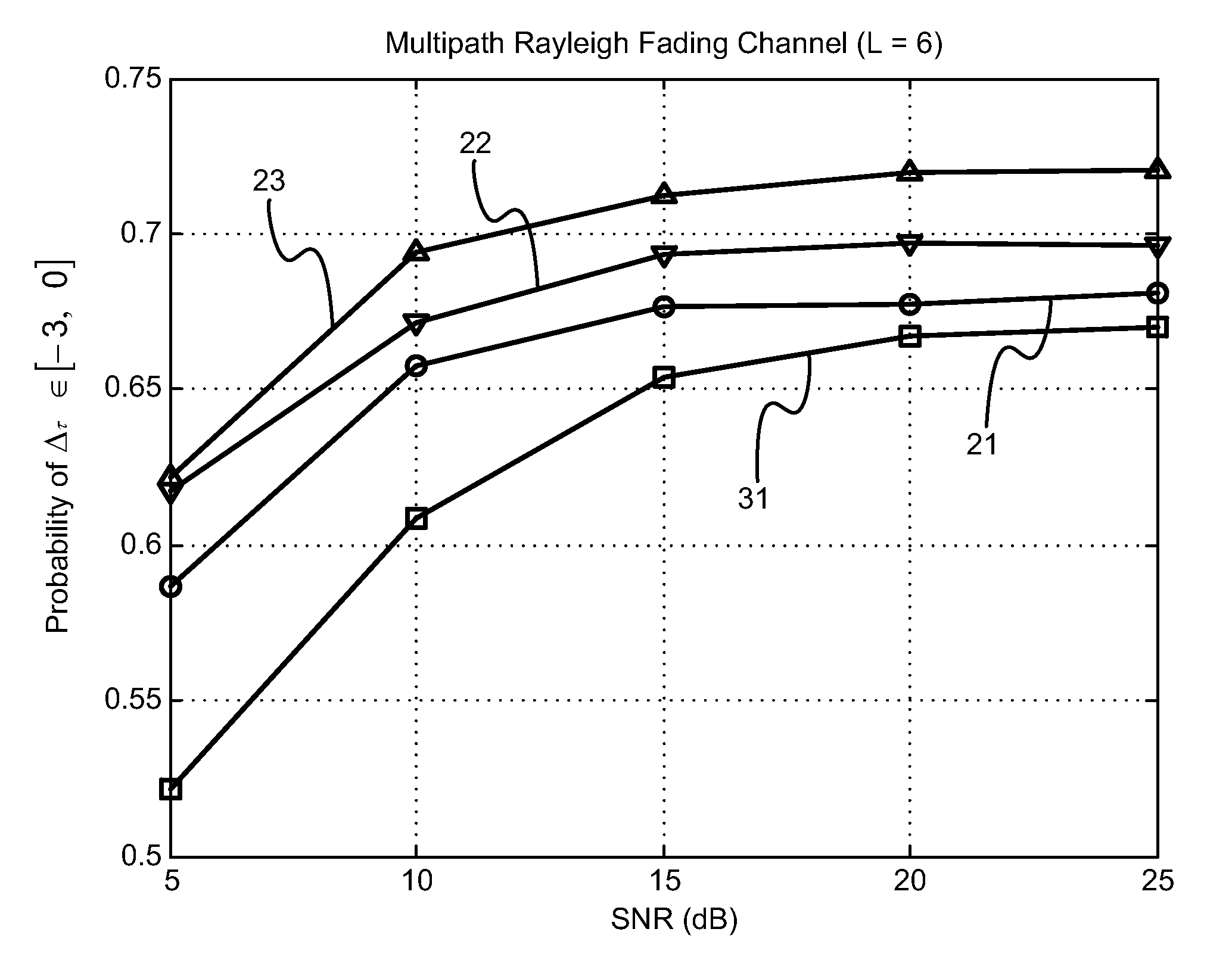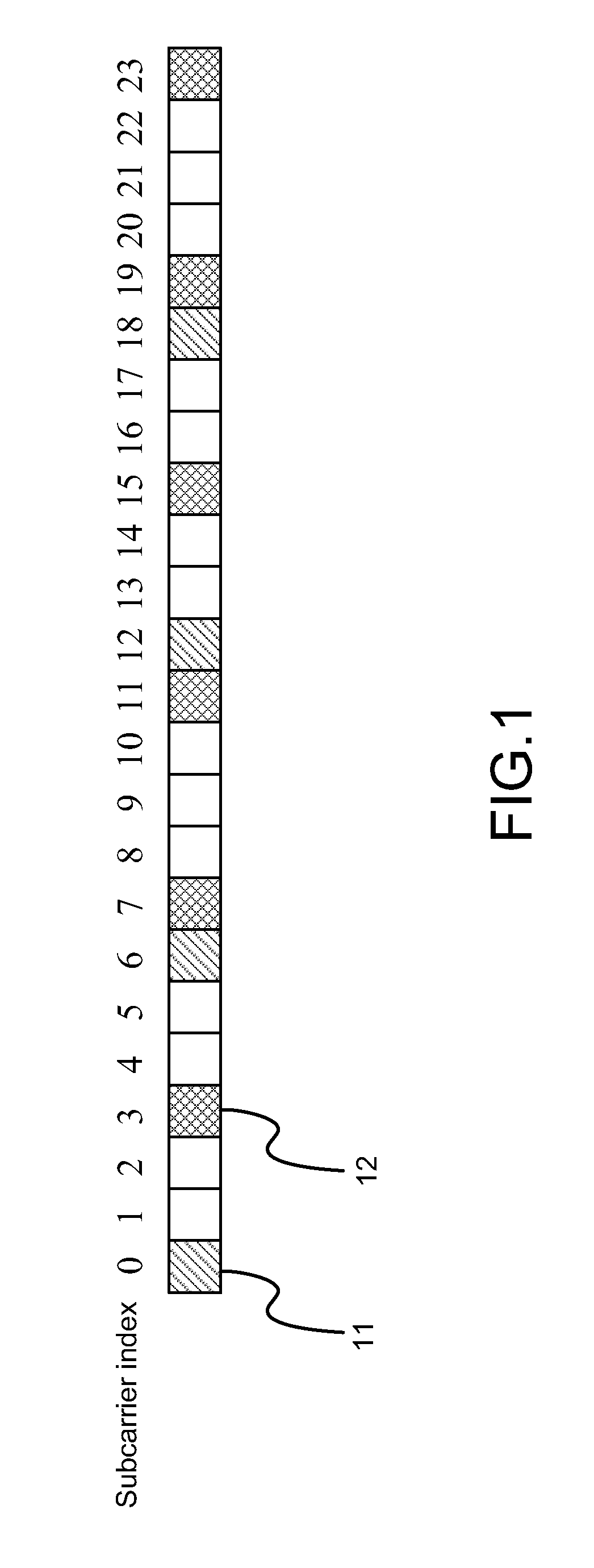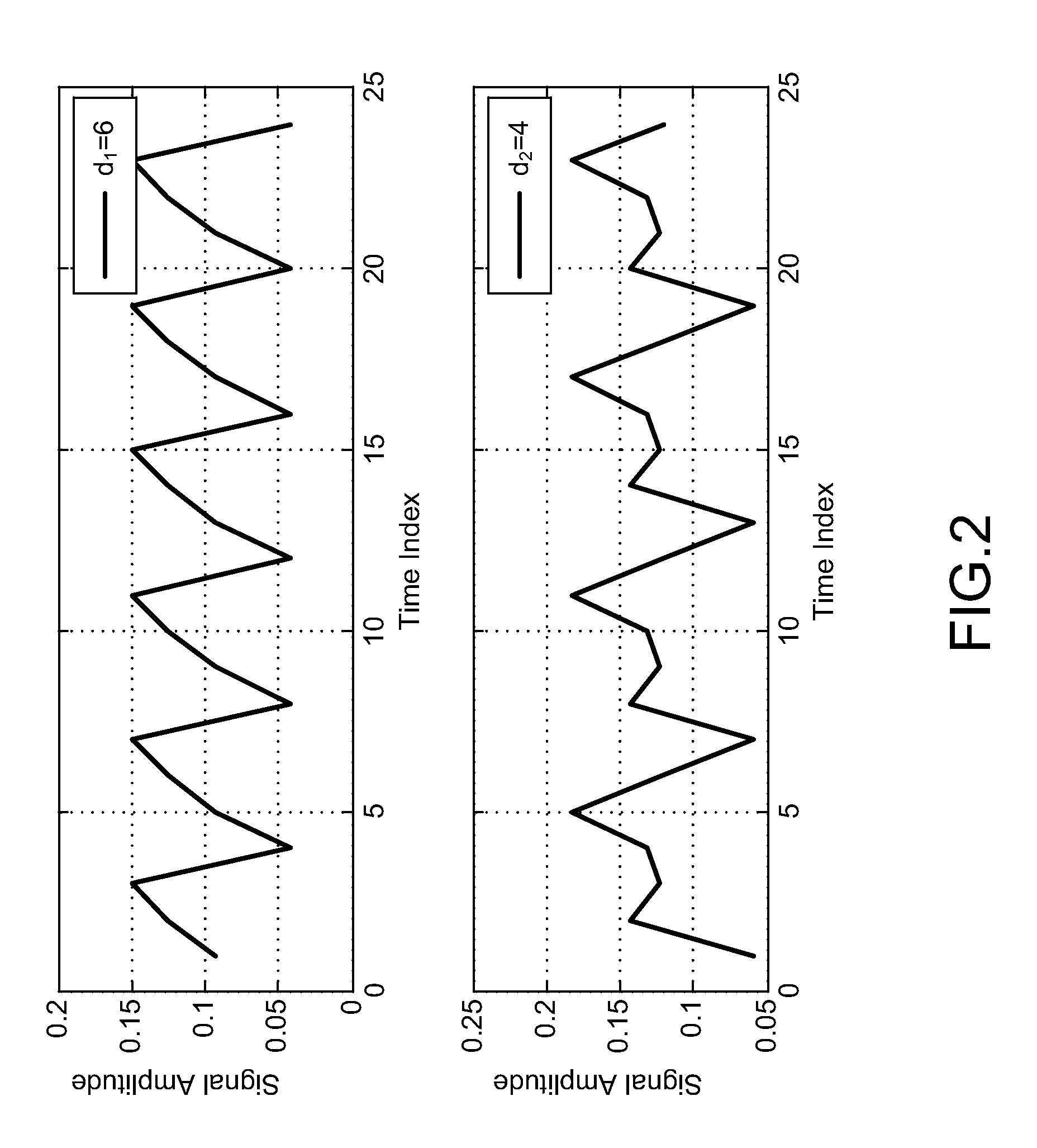Apparatus for Cooperative MIMO OFDM Using Non-Data-Aided Timing Synchronization
a cooperative and timing synchronization technology, applied in diversity/multi-antenna systems, site diversity, transmission path sub-channel allocation, etc., can solve the problems of difficult to combine synchronization and channel estimation, difficult to achieve timing synchronization, and difficult to achieve cooperative mimo system timing synchronization, etc., to achieve the effect of enhancing quality and efficiency of the receiver
- Summary
- Abstract
- Description
- Claims
- Application Information
AI Technical Summary
Benefits of technology
Problems solved by technology
Method used
Image
Examples
Embodiment Construction
[0014]The following description of the preferred embodiment is provided to understand the features and the structures of the present invention.
[0015]Please refer to FIG. 1 and FIG. 2 which are a view showing a structure of generalized interleaved CAS in the frequency domain; and a view showing signal curves of the corresponding UPSP-like random OFDM signals in the time domain. As shown in the figures, the present invention is an apparatus of cooperative MIMO OFDM using non-data-aided timing synchronization, where a novel generalized interleaved CAS is provided for non-data-aided timing synchronization in cooperative MIMO OFDM systems. At least two transmitters are used, where subcarriers are assigned to each of the transmitters in an interleaved manner with a unique space between every neighboring two of the subcarriers. Each of the transmitters generates different signal cycle by transforming the frequency-domain data into the time domain via inverse Fourier transform, and the resu...
PUM
 Login to View More
Login to View More Abstract
Description
Claims
Application Information
 Login to View More
Login to View More - R&D
- Intellectual Property
- Life Sciences
- Materials
- Tech Scout
- Unparalleled Data Quality
- Higher Quality Content
- 60% Fewer Hallucinations
Browse by: Latest US Patents, China's latest patents, Technical Efficacy Thesaurus, Application Domain, Technology Topic, Popular Technical Reports.
© 2025 PatSnap. All rights reserved.Legal|Privacy policy|Modern Slavery Act Transparency Statement|Sitemap|About US| Contact US: help@patsnap.com



